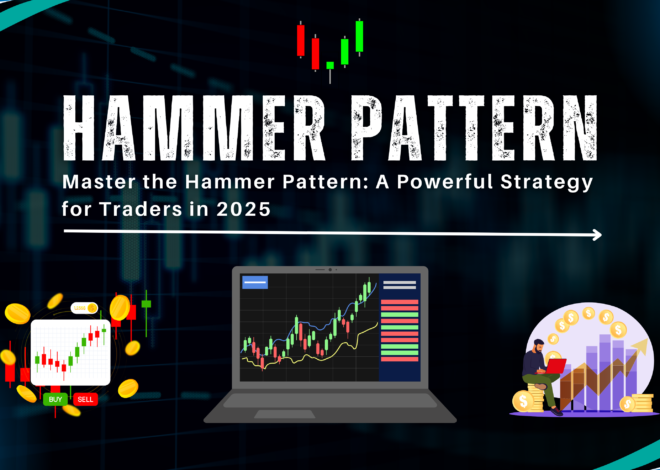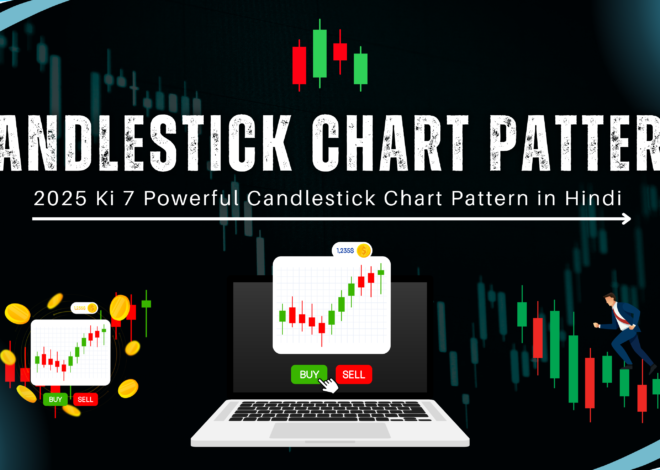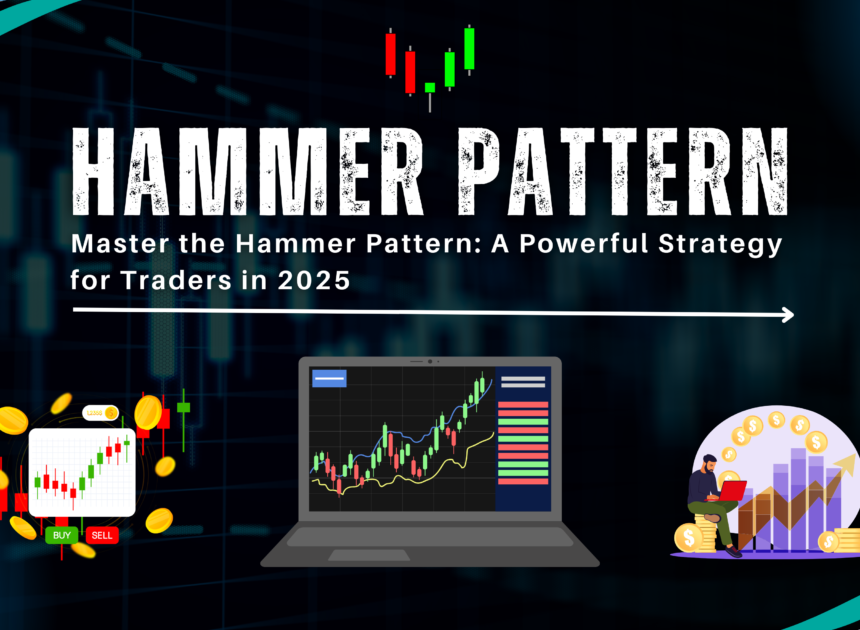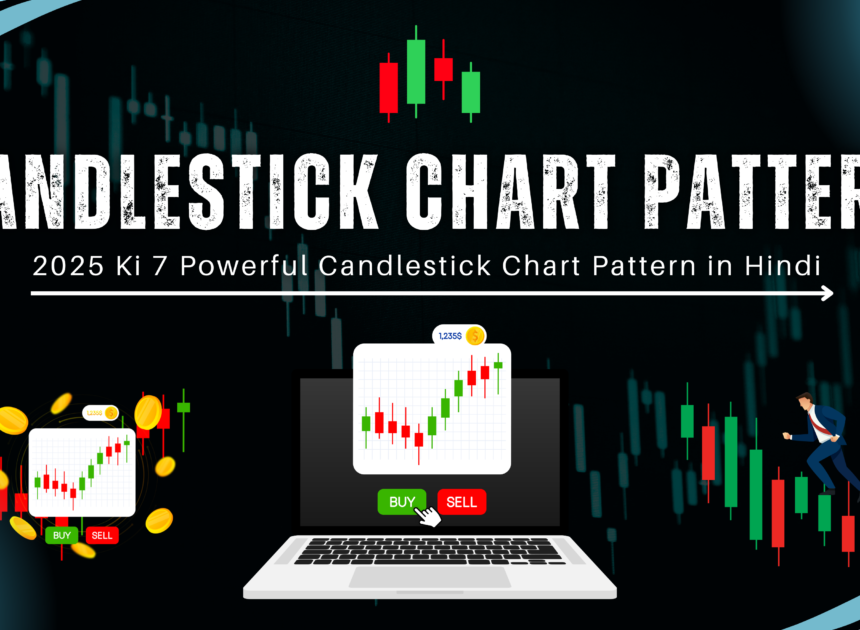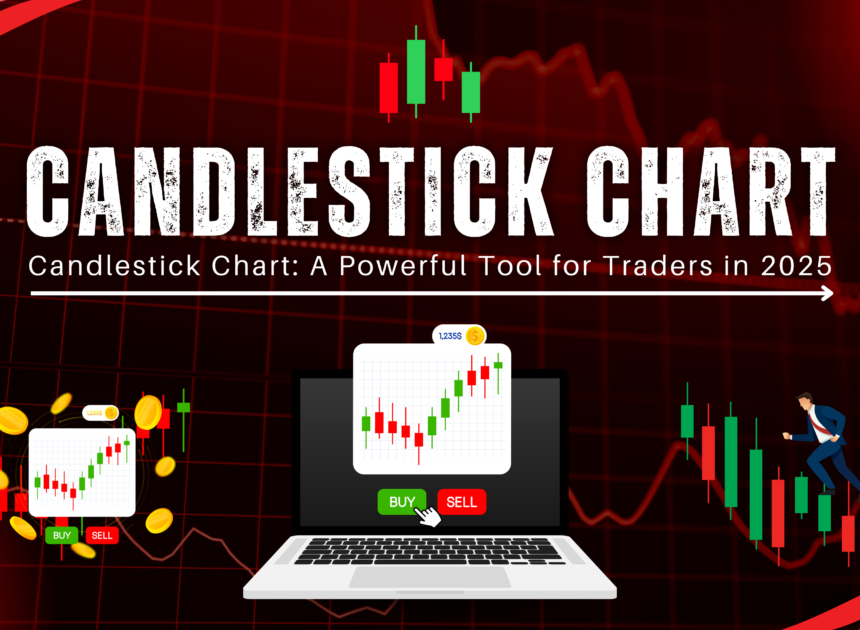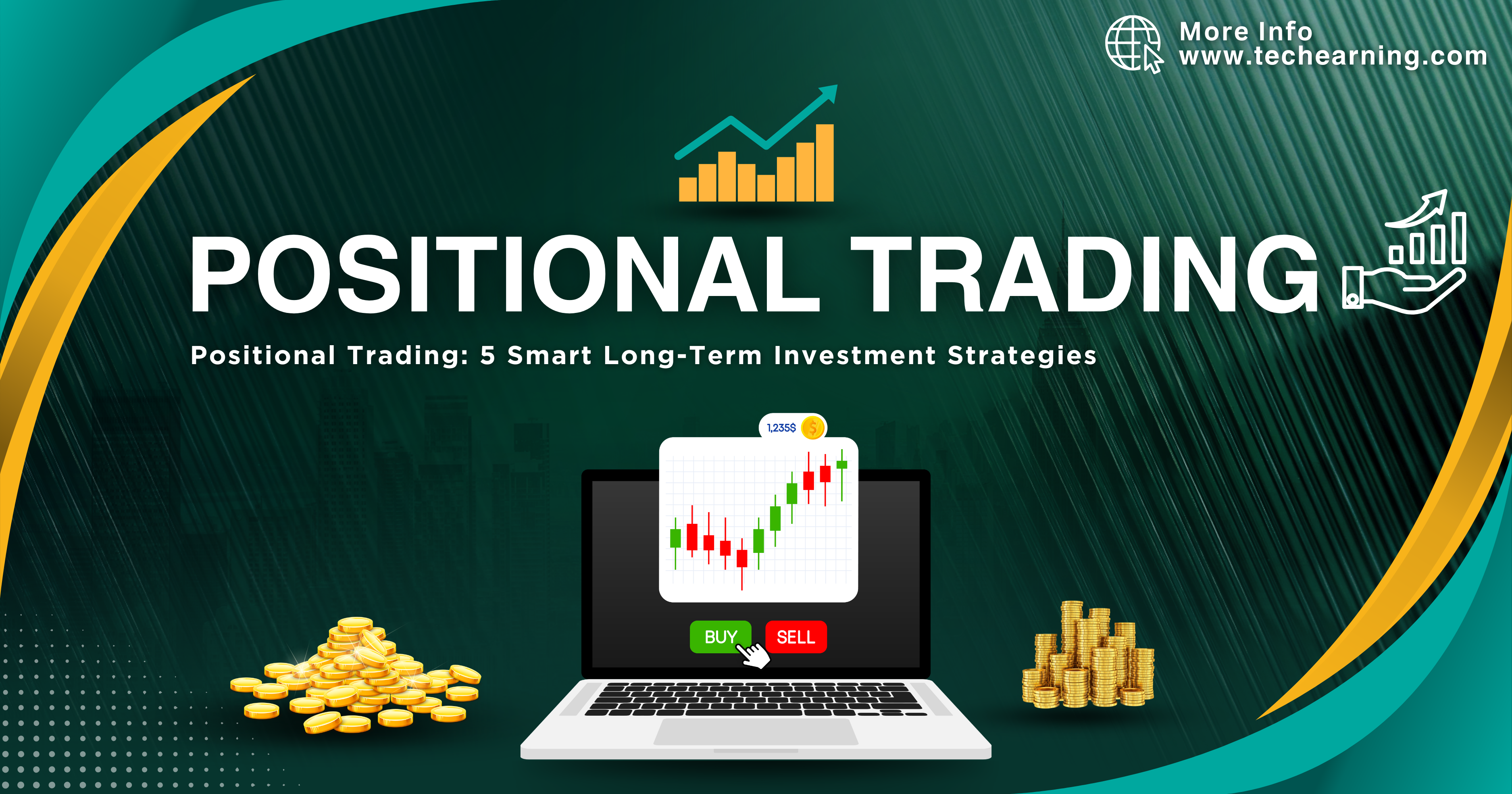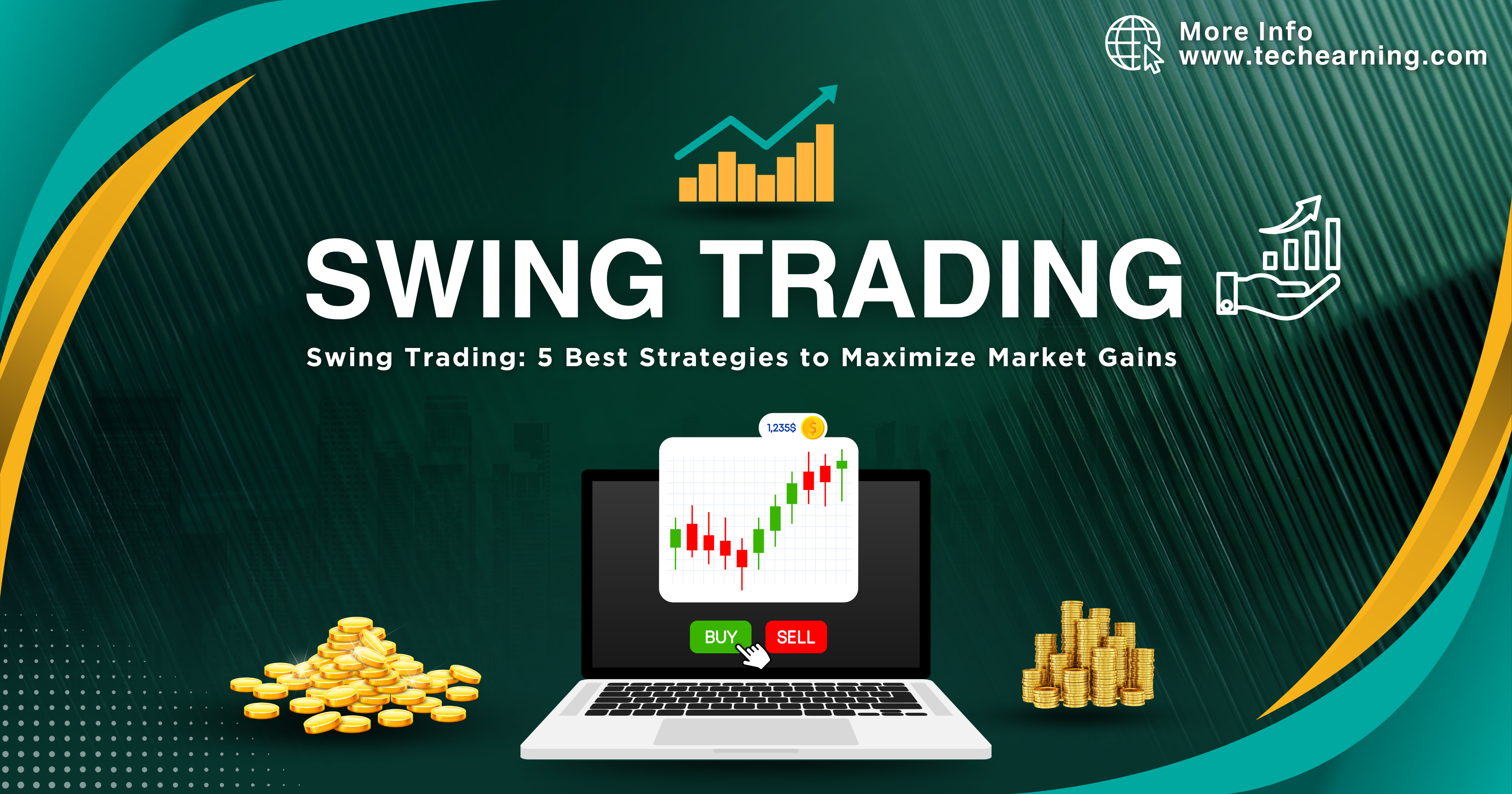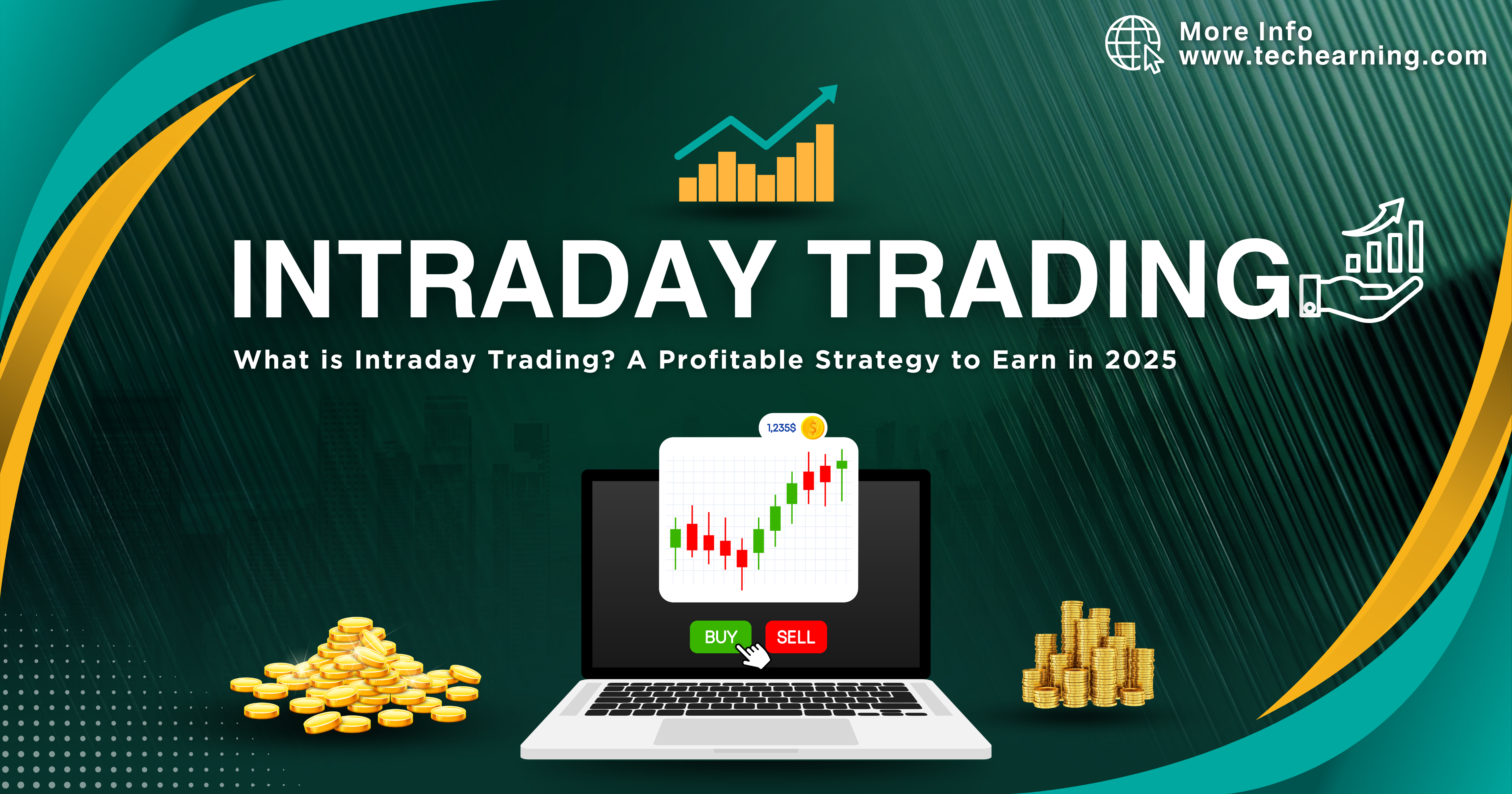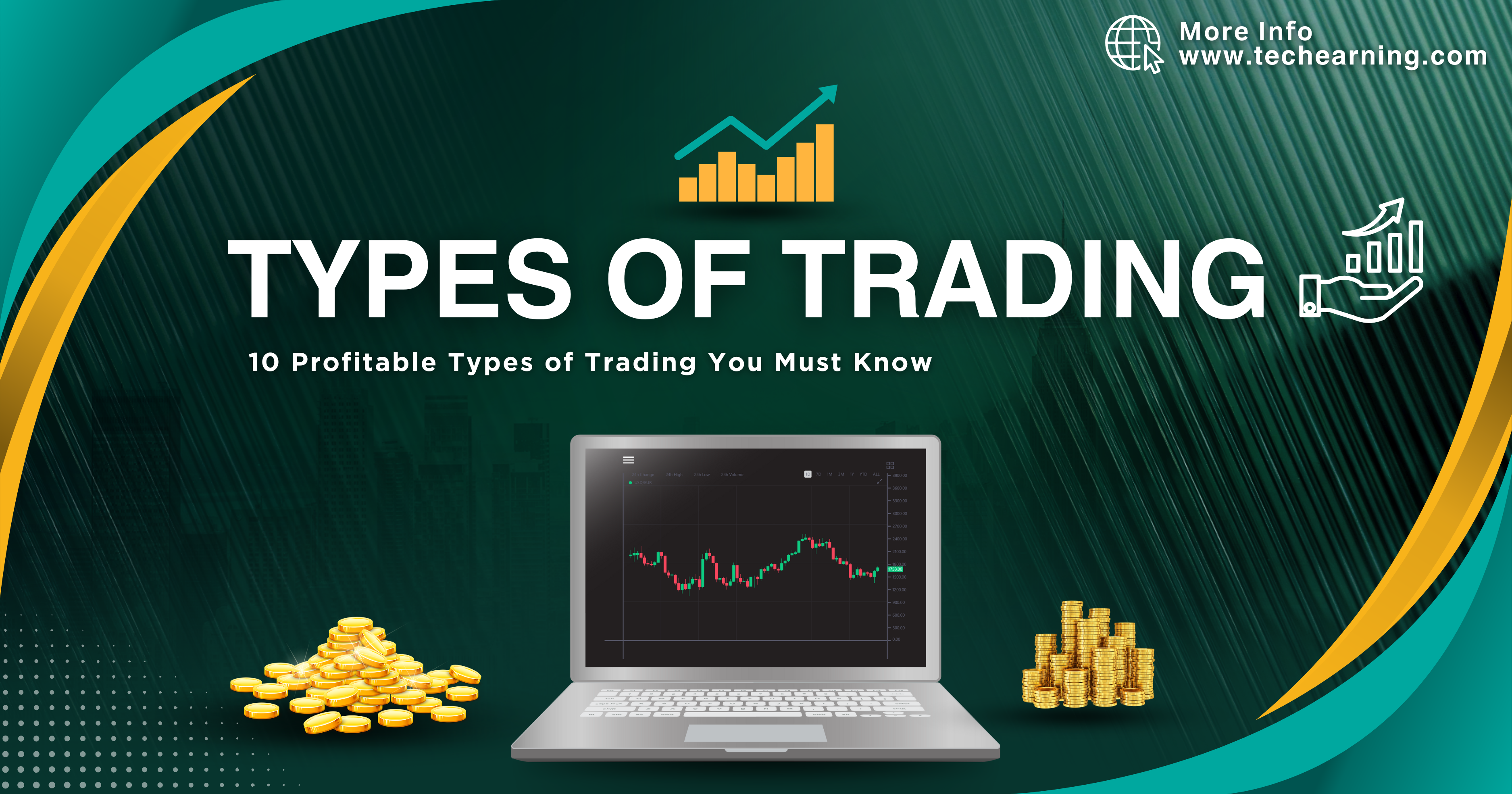
Highlight News
World News
Latest News
Editor Picks
Features and Events
Forex Trading Guide: Top 10 Benefits & Strategies for 2025
Introduction Forex Trading is one of the largest and most liquid financial markets in the world, with a daily trading volume of over $7 trillion. It offers traders the opportunity to profit from currency price fluctuations. Whether you are a beginner or an experienced investor, understanding Forex Trading is crucial to making informed decisions and maximizing your profits. In this article, we will explore what Forex Trading is, how it works, and why it is one of the best investment opportunities in 2025. What is Forex Trading ? Forex Trading, also known as foreign exchange trading or currency trading, is the process of exchanging one currency for another to make a profit. It operates through a decentralized global network where transactions happen electronically between banks, brokers, and traders. How Does Forex Trading Work ? Global Currency Market is based on currency pairs, where one currency is exchanged for another. The most commonly traded currency pairs include: Traders speculate on whether a currency’s value will rise or fall compared to another currency. If they expect a currency to increase in value, they buy it. If they expect it to decrease, they sell it. 10 Powerful Benefits of Forex Trading 24/5 Market Availability Unlike the stock market, which has fixed trading hours, the Forex market operates 24 hours a day, five days a week. This allows traders worldwide to participate at any time. High Liquidity Forex Trading is the most liquid financial market in the world. High liquidity means you can buy and sell currencies instantly without significant price fluctuations. Low Transaction Costs Most Forex brokers charge minimal commissions and spreads, making Forex Trading more cost-effective than stock trading. Leverage for Bigger Profits Forex brokers offer leverage, which allows traders to control large positions with a small investment. For example, with a 1:100 leverage, you can trade $10,000 with just $100. Flexibility in Trading Strategies Forex Trading offers various trading strategies, including: Easy Market Access With just a computer, smartphone, and internet connection, anyone can start Online Currency Exchange from anywhere in the world. Potential for High Profits Since the Forex market is volatile, traders can make significant profits in a short time. However, this also comes with risks. No Middlemen Unlike stock markets, Forex Trading does not require brokers or intermediaries, allowing for direct transactions between buyers and sellers. Diverse Trading Options Traders can invest in various currency pairs, commodities, and indices to diversify their portfolio and minimize risks. Opportunities in Both Rising and Falling Markets In Forex Trading, you can profit in both bullish and bearish markets by either buying (going long) or selling (going short). Key Concepts in Forex Trading Pips and Spreads A pip is the smallest price movement in Forex, while the spread is the difference between the buying and selling price. Margin and Leverage Risk Management To succeed in Forex Trading, it’s essential to implement risk management strategies: Risks of Forex Trading While Forex Trading is profitable, it comes with risks: How to Start Forex Trading in 2025 Choose a Reputable Forex Broker Select a broker that is regulated, reliable, and offers low spreads. Some popular brokers are: Open a Trading Account Register with your broker, complete the KYC process, and deposit funds. Many brokers offer free demo accounts for beginners. Learn Technical and Fundamental Analysis Use technical indicators like Moving Averages, RSI, MACD, and Bollinger Bands to analyze trends. Also, follow economic news and global events that impact currency values. Practice on a Demo Account Before trading with real money, practice on a demo account to understand market movements and trading strategies. Develop a Trading Plan A solid trading plan includes: Forex Trading vs. Stock Trading Feature Forex Trading Stock Trading Market Hours 24/5 Limited Liquidity High Moderate Leverage High Low Transaction Costs Low Higher Volatility High Moderate Conclusion Forex Trading is an exciting and profitable investment opportunity, but it requires knowledge, discipline, and strategy. Whether you are a beginner or an expert, continuous learning is essential for success in the Forex market. For more insights on trading and investment strategies, visit our Home Page for expert guidance and in-depth resources.
Top 5 Reasons Why Algorithmic Trading Can Skyrocket Your Profits
Introduction Algorithmic Trading, also known as Algo Trading or Automated Trading, is revolutionizing financial markets. It involves using computer programs to execute trades at lightning speed based on pre-set conditions. Whether you’re a beginner or an experienced trader, understanding Algorithmic Trading can significantly enhance your investment strategies. What is Algorithmic Trading ? Algorithmic Trading is a method of executing trades using computer algorithms that follow specific instructions. These algorithms analyze market data, identify profitable opportunities, and execute trades without human intervention. The goal is to enhance efficiency, reduce errors, and optimize trade execution speed. Why is Algorithmic Trading Important ? How Algorithmic Trading Works Algo Trading System uses mathematical models and statistical analysis to scan the market for profitable opportunities. The steps involved include: Key Components of Algorithmic Trading Types of Algorithmic Trading Strategies Tools & Platforms for Algorithmic Trading Challenges & Risks of Algorithmic Trading How to Get Started with Algorithmic Trading ? Future of Algorithmic Trading Algorithmic Trading is expected to grow exponentially in the coming years. With advancements in artificial intelligence, big data analytics, and blockchain technology, trading algorithms are becoming more sophisticated. Some future trends include: Conclusion Algorithmic Trading is a game-changer for traders who want to leverage technology for maximum efficiency and profitability. With the right knowledge, tools, and strategy, anyone can enter the world of automated trading and achieve financial success. By understanding the fundamentals, testing strategies, and continuously optimizing them, traders can stay ahead in the competitive financial markets. For more insights on trading and digital marketing, visit our Home Page.
Options Trading 2025: Best Strategies to Make Money
What is Options Trading ? A Beginner’s Guide for 2025 In the world of financial markets, Options Trading is emerging as a highly profitable and strategic investment tool. If you are looking for a way to maximize returns while managing risks effectively, options trading can be an excellent choice. In this article, we will explore what is Options Trading, how it works, its benefits, and essential tips for beginners. What is Options Trading ? Options Trading is a type of derivative trading where investors buy and sell contracts that give them the right (but not the obligation) to buy or sell an underlying asset at a predetermined price within a specific time frame. These contracts are called options, and they can be used for hedging, speculation, or generating income. There are two main types of options: How Does Options Trading Work ? To understand Options Trading, let’s break it down into simple steps: Benefits of Options Trading Common Options Trading Strategies Risks Involved in Options Trading While Options Trading offers great opportunities, it also has risks: How to Start Options Trading in India ? Final Thoughts Options Trading is a versatile and strategic way to earn profits in the stock market. By understanding how it works, using effective strategies, and managing risks, you can take advantage of this powerful investment tool. However, beginners should start slow, educate themselves, and practice before making significant trades. If you want to learn more about digital marketing, video editing, and trading, visit our home page for insightful content!
5 Powerful Strategies for Momentum Trading to Maximize Your Profits
What is Momentum Trading ? Momentum Trading is a popular trading strategy used by traders to capitalize on strong price movements in the market. This technique involves buying assets that are trending upwards and selling those that are trending downwards. The idea is to ride the momentum until signs of a reversal appear. Unlike traditional investing, where traders focus on fundamentals like company earnings and valuation, Momentum Trading primarily relies on technical indicators and market trends. Traders look for assets experiencing significant movement, often due to market sentiment, economic news, or earnings reports. In this article, we will explore the fundamentals of Momentum Trading, the best strategies, and tips to maximize your profits while managing risks effectively. How Does Momentum Trading Work ? Momentum Trading is based on the principle that assets in motion tend to stay in motion. Traders identify stocks, forex pairs, or cryptocurrencies that show strong price action and high trading volumes. The goal is to enter trades at the right time and exit before the trend reverses. Key Factors Influencing Momentum Trading: 5 Best Strategies for Momentum Trading Here are the top strategies that can help you become a successful momentum trader: Breakout Trading Strategy Breakout trading involves entering a trade when the price breaks above a resistance level or below a support level with high volume. This strategy is highly effective when combined with strong momentum indicators. Key Points: Moving Average Crossover Strategy This strategy uses two moving averages (short-term and long-term). When the short-term moving average crosses above the long-term moving average, it signals a buy opportunity. When it crosses below, it signals a sell. Key Points: Relative Strength Index (RSI) Strategy The RSI indicator helps traders determine overbought and oversold conditions. An RSI above 70 indicates overbought conditions (sell signal), while an RSI below 30 indicates oversold conditions (buy signal). Key Points: MACD Strategy The Moving Average Convergence Divergence (MACD) indicator is a powerful tool in Momentum Trading. When the MACD line crosses above the signal line, it indicates a bullish trend. When it crosses below, it signals a bearish trend. Key Points: News-Based Momentum Trading Market-moving news and economic events create significant price momentum. Traders monitor financial news and enter trades based on positive or negative sentiment. Key Points: Common Mistakes in Momentum Trading Many traders make mistakes while attempting to trade momentum. Here are some of the most common pitfalls and how to avoid them: Risk Management in Momentum Trading Momentum Trading can be highly profitable, but it also comes with risks. Here are some essential risk management tips: Conclusion Momentum Trading is an exciting and rewarding trading strategy that allows traders to capitalize on strong price trends. By using the right strategies, technical indicators, and risk management techniques, you can increase your chances of success in the market. If you’re serious about learning more trading techniques and digital marketing strategies, visit our Home Page for valuable resources and expert insights. This guide provides a solid foundation for anyone interested in Momentum Trading. Whether you are a beginner or an experienced trader, applying these strategies with discipline and patience can significantly enhance your trading success.
Scalping Strategy: The Ultimate Guide to Fast Profits in 2025
Scalping: The Fastest Way to Trade and Earn Profits Short-term trading is one of the most dynamic and rapid trading strategies that traders use to take advantage of small price movements. Unlike traditional trading methods, where positions are held for hours, days, or even months, scalping involves executing multiple trades within minutes or even seconds. This technique is widely used in forex, stock, and cryptocurrency markets to generate quick and consistent profits. In this guide, we will explore what scalping is, how it works, the best scalping strategies, and how traders can minimize risks while maximizing profits. What is Scalping ? Scalping is a trading approach where traders execute numerous trades within a short timeframe, capitalizing on minor price fluctuations. The goal is to accumulate small but frequent gains rather than holding positions for large profits over an extended period. Key Characteristics of Scalping: How Does Scalping Work ? High-frequency trading works by leveraging short-term price changes in a highly liquid market. Traders use technical analysis and various indicators to identify quick entry and exit points. Steps to Execute a Scalping Trade: Best Scalping Strategies for 2025 Moving Average Crossover Strategy This strategy involves using short-term moving averages (5-period and 15-period) to identify trend direction. A buy signal is generated when the shorter moving average crosses above the longer moving average, and a sell signal is triggered when it crosses below. Bollinger Bands Strategy Scalpers use Bollinger Bands to determine price volatility. A common approach is to buy at the lower band and sell at the upper band when the price is in a ranging market. RSI Overbought & Oversold Levels When the RSI (Relative Strength Index) falls below 30, it indicates an oversold market, making it a potential buying opportunity. Conversely, when RSI exceeds 70, it signals an overbought market, suggesting a sell opportunity. One-Minute Scalping Strategy This is a popular forex Short-term trading technique where traders use 1-minute charts, looking for quick price movements and using indicators like EMA (Exponential Moving Average) to confirm trends. Level 2 Market Data Analysis By analyzing the order book (Level 2 market data), scalpers predict short-term price movements based on bid and ask volumes. Best Markets for Scalping High-frequency trading is most effective in markets with high liquidity and tight spreads. The best markets for High-frequency trading include: Pros and Cons of Scalping Advantages of Scalping: Disadvantages of Scalping: Risk Management in Scalping Due to the high volume of trades, risk management is crucial for Quick trading strategy . Here are some risk-reduction techniques: Is Scalping Right for You ? Scalping is suitable for traders who: However, if you prefer a less intense trading style, swing trading or long-term investing might be better options. Conclusion Quick trading strategy is an exciting and fast-paced trading strategy that offers traders an opportunity to make quick profits. By using the right strategies, technical indicators, and proper risk management, traders can enhance their chances of success. Whether you are trading forex, stocks, or cryptocurrencies, Quick trading strategy requires discipline, patience, and a deep understanding of market dynamics. To learn more about trading strategies, digital marketing, and online earning methods, visit our Home Page for expert insights!
Positional Trading: 5 Smart Long-Term Investment Strategies
Introduction In today’s time, there are multiple ways to earn in the stock market, and one of them is Positional trading. If you want to avoid short-term fluctuations and earn steady profits, this strategy can be ideal for you. Positional trading is a method where traders hold a stock for several days, weeks, or even months. In this article, we will understand what positional trading is, how it works, its benefits, risks, and the best strategies to become a successful positional trader. What is Positional Trading ? Positional trading is a strategy where traders hold a stock or asset for the long term. This strategy is based on technical and fundamental analysis, where traders maintain their position without being affected by short-term price movements. The main objective is to earn significant profits based on long-term market trends. Unlike day trading and swing trading, positional trading focuses on large price movements over an extended period. Traders use a mix of fundamental and technical indicators to identify the right stocks that have the potential for growth. How Does Positional Trading Work ? Benefits of Positional Trading Risk Factors in Positional Trading Best Strategies for Positional Trading Moving Average Strategy Using 50-day and 200-day moving averages to confirm trends. If the 50-day moving average moves above the 200-day moving average, it indicates a buy signal. Breakout Trading Strategy If a stock breaks above its resistance level, it generates a strong buy signal. Fundamental Growth Stocks Investing in companies with strong long-term growth potential, such as those with high ROE (Return on Equity) and ROCE (Return on Capital Employed). Sectoral Trend Analysis Investing in leading stocks within a sector that shows strong growth trends. Support and Resistance Trading Identifying key support and resistance levels to make strategic entry and exit decisions. News-Based Trading Strategy Following news updates related to specific industries or companies to make informed trading decisions. Earnings Reports and Financial Statements Investors closely monitor company earnings reports and financial statements to choose stocks with strong fundamentals. Dividend Growth Strategy Investing in companies that consistently pay dividends and show growth potential. How to Become a Successful Positional Trader ? Conclusion Positional trading is a long-term investment strategy based on patience and analysis. If you understand market trends and trade accordingly, you can earn good profits in the long run. Discipline and research are crucial for success in trading. By following effective strategies and maintaining risk management, traders can maximize their returns. If you are new to trading, start with small investments and gain experience before committing a large portion of your capital. Learning continuously and staying updated with market conditions will help you become a successful positional trader. If you want to learn more about digital marketing and online earnings, visit our Home Page !
Swing Trading: 5 Best Strategies to Maximize Market Gains
What is Swing Trading ? Swing trading is a trading strategy that aims to capture short-to medium-term price movements in financial markets. Unlike day trading, where positions are closed within a single trading day, swing traders hold their trades for several days or weeks to take advantage of price swings. This method is popular among traders who prefer a balance between fast-paced day trading and long-term investing. How Does Swing Trading Work ? Swing traders analyze technical indicators, market trends, and price patterns to enter and exit trades at optimal points. The goal is to identify assets that are likely to experience short-term price fluctuations and capitalize on those movements. Key Elements of Swing Trading: Why is Swing Trading Beneficial ? Swing trading offers several advantages, making it a preferred strategy for many traders. Some key benefits include: Best Strategies for Swing Trading Success To become a successful swing trader, it is essential to implement the right strategies. Here are some top swing trading strategies: Moving Average Crossover This strategy involves using two moving averages (such as 50-day and 200-day) to identify trend reversals. When the short-term moving average crosses above the long-term moving average, it signals a buying opportunity. Conversely, when it crosses below, it indicates a selling opportunity. RSI (Relative Strength Index) Strategy RSI helps determine overbought and oversold conditions in the market. When RSI drops below 30, it indicates an oversold market, signaling a potential buying opportunity. Conversely, an RSI above 70 suggests an overbought market, signaling a selling opportunity. Support & Resistance Trading Swing traders use support and resistance levels to enter and exit trades. Buying near support and selling near resistance can maximize profits. Traders also use candlestick patterns like Doji and Hammer to confirm reversals at these levels. Fibonacci Retracement Strategy Fibonacci retracement levels help traders identify potential reversal points. The 38.2%, 50%, and 61.8% levels are commonly used to determine entry and exit points. Traders wait for price action confirmation before executing trades at these levels. Breakout Trading Strategy This strategy focuses on trading assets that break above resistance or below support levels with high volume, signaling strong momentum. Breakouts indicate the beginning of a new trend and provide lucrative trading opportunities. Common Mistakes to Avoid in Swing Trading Even experienced traders can make mistakes. Avoiding these common pitfalls can improve your success rate: Best Tools for Swing Trading To succeed in swing trading, traders rely on various tools and resources: Is Swing Trading Right for You ? Swing trading is ideal for traders who: Final Thoughts on Swing Trading Swing trading is a powerful strategy for traders looking to capitalize on short-term price movements without the intensity of day trading. By using the right technical tools, managing risks effectively, and avoiding common mistakes, traders can increase their chances of success. If you’re new to swing trading, start with a demo account, practice different strategies, and refine your skills before trading with real money. Remember, success in swing trading requires patience, discipline, and continuous learning. Want to learn more about trading and digital marketing? Visit our Home Page for more valuable insights!
What is Intraday Trading? A Profitable Strategy to Earn in 2025
Introduction Intraday Trading, also known as day trading, is a short-term trading strategy where traders buy and sell financial instruments within the same trading day. This method is highly popular in stock markets due to its potential for quick profits. However, it requires strategic planning, market analysis, and risk management to be successful. Intraday Trading: A Part of the Trading World Intraday Trading is a crucial segment of the broader trading landscape. It falls under the category of active trading, which includes swing trading, positional trading, and scalping. Unlike long-term investing, intraday traders seek to benefit from short-term price movements within the same trading session. Understanding Intraday Trading Intraday Trading involves executing multiple trades within a day to capitalize on price fluctuations. Traders aim to leverage short-term movements in stock prices, making it different from traditional investing, where stocks are held for long periods. Key Features of Intraday Trading How to Start Intraday Trading To start Intraday Trading, follow these essential steps: Choose a Reliable Trading Platform Select a broker that provides low brokerage charges, real-time data, and advanced charting tools. Select the Right Stocks Pick stocks that have high liquidity, volatility, and strong trading volume. Blue-chip stocks and sector leaders are preferred. Use Technical Analysis Analyze candlestick charts, moving averages, and support/resistance levels to make informed trading decisions. Set Stop Loss and Target Price A stop loss minimizes potential losses, while a target price ensures profit booking at the right time. This prevents emotional decision-making. Stay Updated with Market Trends Economic events, company news, and market sentiment affect stock prices. Keep track of these factors before trading. Risk Management Never invest all your capital in one trade. Use proper risk-reward ratios to protect your funds. Benefits of Intraday Trading Risks Associated with Intraday Trading Best Strategies for Successful Intraday Trading Momentum Trading This strategy focuses on stocks that are moving significantly in one direction due to news, earnings reports, or market sentiment. Traders enter when momentum is strong and exit before it weakens. Breakout Trading Traders identify key resistance and support levels and enter trades when the price breaks these levels. This strategy works best with high-volume stocks. Scalping A strategy where traders make multiple trades with small price movements to accumulate profits. It requires a high-speed trading platform and quick decision-making. Reversal Trading Traders look for stocks that have reached extreme price levels and expect a trend reversal. It involves identifying oversold and overbought conditions. Gap and Go Trading This strategy focuses on stocks that open significantly higher or lower than the previous day’s close due to news or events. Traders capitalize on the momentum at market open. Essential Tools for Intraday Trading Common Mistakes to Avoid in Intraday Trading Conclusion Intraday Trading is an exciting yet challenging way to earn profits in the stock market. By using the right strategies, managing risks, and staying updated with market trends, traders can maximize their chances of success. However, it is crucial to approach intraday trading with discipline and a well-defined plan. For more insights on trading, investing, and digital marketing, visit our Home Page .
10 Profitable Types of Trading You Must Know
Introduction Trading has evolved into a diverse and complex financial activity, offering various strategies to suit different risk appetites and investment goals. If you’re wondering, “How many types of trading are there?”, this article will provide insights into 10 profitable types of trading, helping you choose the best one for your financial success. Understanding the different types of trading is crucial for both beginners and experienced traders. Each trading type has unique characteristics, risks, and rewards. Whether you’re looking for short-term profits or long-term investments, selecting the right approach can significantly impact your financial growth. Let’s dive into the ten most profitable types of trading and analyze their features, benefits, and drawbacks. Intraday Trading Intraday trading, also known as day trading, involves buying and selling assets within a single trading session. Key Features: Pros: Cons: Swing Trading Swing trading involves holding assets for several days or weeks to capture short- to medium-term price movements. Key Features: Pros: Cons: Positional Trading Positional traders hold assets for months or even years, focusing on long-term market trends. Key Features: Pros: Cons: Scalping Scalping is an ultra-short-term strategy where traders make multiple small trades within minutes to secure tiny profits. Key Features: Pros: Cons: Momentum Trading Momentum traders capitalize on strong price movements, buying assets that show an upward trend. Key Features: Pros: Cons: Options Trading Options trading involves buying and selling contracts that grant the right, but not the obligation, to buy or sell an asset at a specified price. Key Features: Pros: Cons: Algorithmic Trading Algorithmic trading uses computer programs and pre-defined criteria to execute trades automatically. Key Features: Pros: Cons: Forex Trading Forex trading involves the buying and selling of currency pairs to profit from exchange rate fluctuations. Key Features: Pros: Cons: Commodity Trading Commodity trading focuses on raw materials like gold, oil, and agricultural products. Key Features: Pros: Cons: Cryptocurrency Trading Crypto trading involves digital assets like Bitcoin and Ethereum, taking advantage of price volatility. Key Features: Pros: Cons: Conclusion So, how many types of trading are there? The answer is diverse, with 10 key types of trading that cater to different risk levels and financial goals. Whether you prefer short-term gains or long-term investment, choosing the right trading strategy can significantly impact your success. Each type of trading comes with unique opportunities and challenges. Understanding your risk tolerance, financial goals, and market conditions will help you decide the best approach. As you continue exploring the world of trading, always stay updated with market trends and enhance your knowledge to maximize profits. For more expert insights on types of trading and digital marketing, visit our Home Page .
How to Upload Long Videos to YouTube in 2025 – The Ultimate & Easiest Guide
How to Upload Long Videos to YouTube in 2025 (Step-by-Step Guide) Uploading long videos to YouTube in 2025 is now more efficient, but specific requirements must be met. Whether you’re a content creator, business owner, or educator, knowing how to upload long videos properly is crucial. This guide covers everything from verification to troubleshooting issues. If you’re wondering how to upload long videos to YouTube in 2025 without errors, follow this step-by-step process. Why Upload Long Videos on YouTube? Step-by-Step Guide to Uploading Long Videos to YouTube Verify Your YouTube Account To upload long videos to YouTube in 2025, you must verify your YouTube account. After verification, you can upload videos longer than 15 minutes. Check YouTube’s Video Length Limits Prepare Your Video Before Uploading Ensure your video meets YouTube’s technical standards before uploading long videos to YouTube in 2025. Optimize Your Video for SEO Your video must be properly optimized for better rankings on YouTube in 2025. Uploading Your Video to YouTube Follow these steps to upload long videos to YouTube in 2025 successfully: Fixing Large File Upload Issues If you encounter slow uploads or failures when uploading long videos to YouTube in 2025: Best Practices for Uploading Long Videos Common Uploading Issues & Solutions Issue Solution Slow Upload Speed Reduce file size, use wired internet, upload during off-peak hours Processing Stuck Re-upload, clear cache, restart browser Copyright Strikes Use royalty-free music & visuals, review YouTube’s policies Blurry Video After Upload Wait for full processing, check original resolution Upload Fails Midway Ensure stable internet, use YouTube’s Resume Upload Feature Extra Tips for Better Video Performance Final Thoughts Uploading long videos to YouTube in 2025 is simple if you follow the right steps. From verifying your account to optimizing video settings, ensuring a smooth upload process is key. Proper SEO, high-quality uploads, and effective promotion will maximize engagement and reach. If you follow these guidelines, you’ll have no trouble when uploading long videos to YouTube in 2025. For more digital marketing and video editing tips, visit our Home page !





